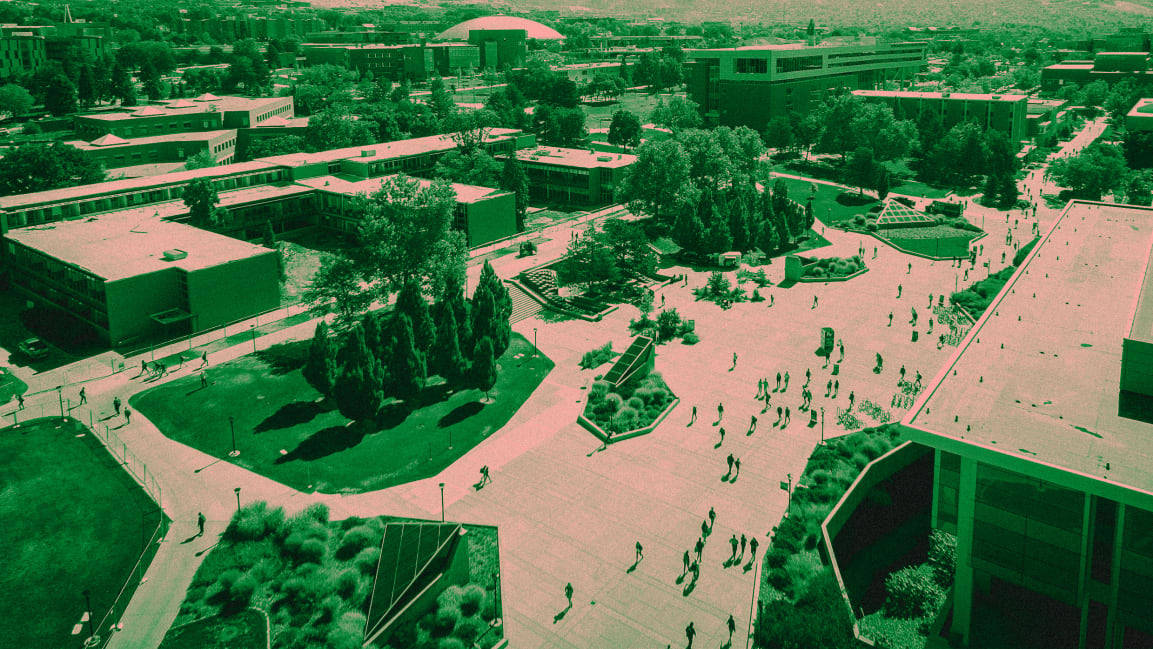
An abandoned mine shaft beneath the town of Mansfield, England, is an unlikely place to shape the future of cities. But here, researchers from the nearby University of Nottingham are planning to launch a “deep farm” that could produce 10 times as much food as farms aboveground. Deep farms are an example of what the latest wave of smart cities looks like: putting people first by focusing on solving urban problems and improving existing infrastructure, rather than opening shiny new buildings.
These smart cities look nothing like science fiction. In fact, the sleek, futuristic visions often used to promote smart cities tend to alienate residents. Isolated high-tech buildings, streets, or cities can foster social inequality, and even free WiFi and bike-sharing schemes mainly benefit the affluent.
So, instead of chasing ribbon-cutting opportunities in city centers, planners, community leaders, and researchers are coming together to tackle mundane but serious issues, such as improving poor-quality housing, safeguarding local food supplies, and transitioning to renewable energy.
In my own research, commissioned by the British Council, I looked at how new projects and partnerships with universities in eight European cities are making life better for residents, through the clever use of technology. You may already be living in a smart city—here’s what to look out for.
These new smart cities are getting communities and universities involved, alongside big companies and city authorities. This has helped shift the focus of smart-city projects onto the needs of residents. During my interviews in cities across Europe—from Bucharest, Romania, to Warsaw, Poland, and Zaragoza, Spain—I found that university students and researchers have played an active role in this, consulting with residents and working with city hall to promote cooperation between citizens and local institutions.
But above all, communities are now part of the conversation. The EU-funded Sharing Cities program, led by city halls and universities in London, Lisbon, and Milan, has the audacious goal of proving that at least half of the 15,000 locals affected by improvements have actively participated in the process. City authorities have worked with residents to design and implement smart-city technologies including smart lampposts, energy management, and e-mobility (smart parking, car sharing, electric charging points, and so on)—but also to ensure these changes actually improve their lives.
Successful smart-city projects blend disciplines, bringing together experts in behavioral change alongside specialists in artificial intelligence and information technologies. Interdisciplinary work can be messy and difficult, it can take longer, and it may not always work—but when it does, it can bring real benefits to cities.
For instance, Nottingham City Council and Nottingham Trent University have been part of the Remourban regeneration program, working across sectors with cities around Europe. Homes in the Nottingham suburb of Sneinton have been upgraded with new outside walls and windows, a solar roof, and a state-of-the-art heating system—a process that takes just a few days.
The result is improved insulation and reduced energy bills for residents, but also better public health: calculations suggest that bad housing costs the U.K.’s National Health Service £1.4 billion a year, and improving the quality of homes can cut visits to local doctors almost by half.
The German city of Darmstadt has worked with citizens, universities, museums, and businesses to plan for the future. For smart-city projects to be embraced by residents, the benefits of new technologies need to be balanced against the need to manage privacy and security concerns. Darmstadt has set up an ethics advisory committee and has a strong focus on cybersecurity.
The city was recently crowned winner of the German Digital City competition, and the municipal government is now working with other German cities to share what has worked.
The new wave of smart cities spreads improvements beyond the city center, with universities from France to Ireland running initiatives to bring residents from surrounding areas onto campus and take their expertise into local communities.
For instance, when Technological University Dublin and Dublin City Council came together to develop a new campus in the deprived district of Grangegorman, they opened it up to the rest of the city. Community members eat with the students in the canteen, new buildings reuse material from the old site, renewable energy is stored locally, with excess power released onto the grid, and signage throughout the campus is the same as for the rest of the city, blurring the edges between the university and the city.
Technology can play an important and often decisive role in tackling urban problems. But the smart city of the future is more likely to be defined by quieter upgrades to existing infrastructure and new partnerships that better represent residents, than by flashy new developments that resemble visions from science fiction.
Avots: fast company